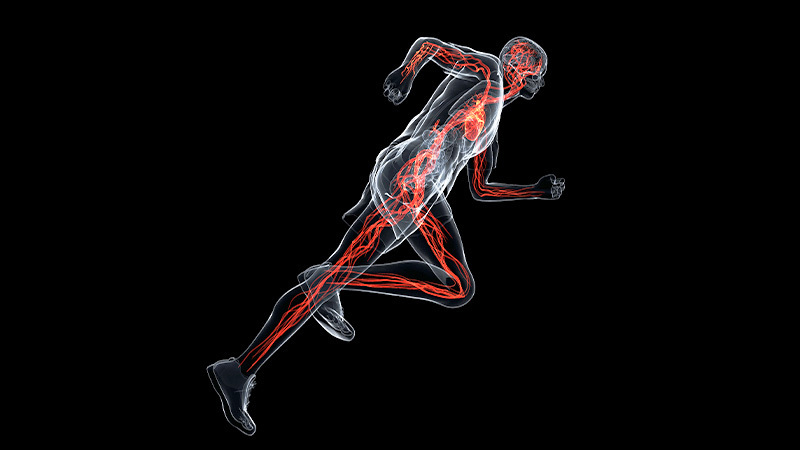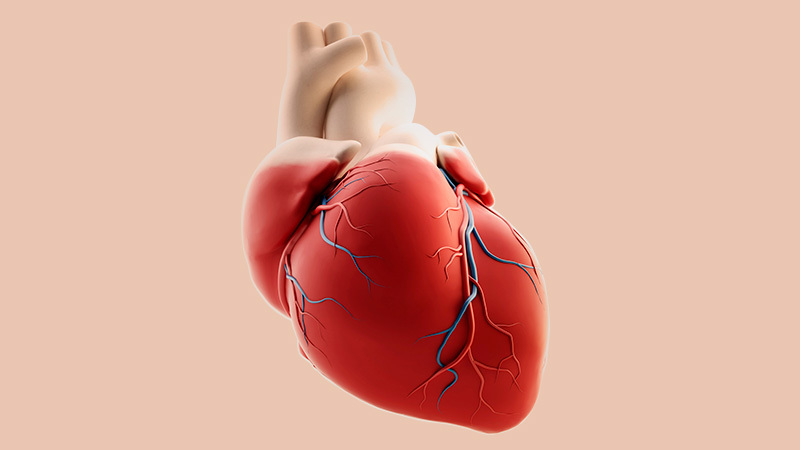A study using the Clinical Deep Data Accumulation System (CLIDAS), which collects information such as basic patient information, lab data, prescriptions, ECG and echo data, PCI reports, and outcomes directly from institutional systems, found that in actual clinical practice in Japan, patients with acute coronary syndromes (ACS) have a higher risk of 2-year MACCE (cardiovascular death, MI, or stroke) than patients with chronic coronary syndromes (CCS), but there is no difference in cardiovascular mortality beyond 90 days.
Pharmacotherapy and Outcomes in Post-PCI Patients in Japanese Practice: Clinical Deep Data Accumulation System (CLIDAS)

Furthermore, high-dose statins, standard-dose beta blockers, and heart rate at hospital discharge were associated with a risk of MACCE and MI, according to a presentation by Dr. Tetsuya Matoba of Kyushu University at the Late Breaking Cohort Studies session at the 86th Annual Meeting of the Japanese Circulation Society.
Seven institutions have been participating in CLIDAS: Tohoku University, Jichi Medical University, Saitama Medical Center of Jichi Medical University, University of Tokyo, National Cerebral and Cardiovascular Center Hospital, Kyushu University, and Kumamoto University. In this study, data from 9,690 patients with available follow-up data out of 9,936 post-PCI patients registered from April 2013 to March 2019 were analyzed.
Patient Background
In this study, 43% of patients had ACS and 57% had CCS. There were marked differences in patient background, with a higher proportion of women in the ACS group compared to the CCS group, and a higher proportion of patients in the CCS group having diabetes, atrial fibrillation, CKD stage ≥3, history of MI, PCI, CABG, stroke, heart failure hospitalization, peripheral artery disease, and malignancy.
Laboratory Data and Drug Therapy
Compared to the CCS group, the ACS group had higher total cholesterol (172 mg/dL vs. 167 mg/dL), LDL-C (102 mg/dL vs. 91 mg/dL), eGFR (60 mL/min vs. 57 mL/min) and BNP (286 pg/mL vs. 206 pg/mL), while triglycerides (133 mg/dL vs. 141 mg/dL) and HDL-C (45 mg/dL vs. 48 mg/dL) were lower (all p<0.0001).
Statin prescription rates were 30% and 73% for the ACS and CCS groups, respectively, 10% and 25% for high-dose statins, and 1.7% and 5.9% for ezetimibe, respectively (all p<0.0001).
Coronary Angiography, Echocardiography, and Electrocardiography
Contrast findings showed a higher proportion of patients in the ACS group had LM/3-vessel disease (23% vs 19%: p<0.0001), RCA lesions (57% vs 52%: p<0.0001), LM lesions (9% vs 8%: p<0.0344), LAD lesions (76% vs 72%: p=0.0003) and echocardiographic evaluation showed LVEF was low (55% vs 59%: p<0.0001).
The ECG data also showed that the ACS group had higher heart rates (69 bpm vs. 66 bpm), ST deviation (23% vs. 17%), and Q waves (35% vs. 21%), while the CCS group had a higher rate of atrial fibrillation (4.7% vs. 5.8%) and left ventricular hypertrophy (17% vs. 20%) as well as a longer QRS width (102 msec vs. 104 msec), all indicated significant differences.
Relationship Between Statin Use and Events
Looking at statin use up to 30 days post-PCI from 2013 to 2018, the use of high-dose statins (atorvastatin 20 mg, rosuvastatin 5-10 mg, pitavastatin 3-4 mg) has increased over the years, from less than 40% in the ACS group in 2013 to over 60% in 2018. Meanwhile, the CCS group increased from about 30% in 2013 to about 40% in 2018, although not as pronounced.
In addition, the rate of achieving LDL-C levels <70 mg/dL 31-183 days after PCI increased from about 30% in 2013 for both the ACS and CCS groups to about 40% in 2018.
MACCE and Predictors After PCI
The rate of MACCE (cardiovascular death, MI, stroke) at 2 years after PCI was 7.1% in the ACS group and 3.9% in the CCS group (p<0.0001), with an overall rate of 5.5%. The risk of cardiovascular death was significantly higher in the ACS group than in the CCS group (unadjusted HR 1.62 [1.41-1.86] p<0.0001), but landmark analysis showed no difference in >90-day cardiovascular death (p=0.2718).
The risk of MI was significantly higher in the ACS group than in the CCS group (unadjusted HR 2.21 [1.70-2.87] p<0.0001), but there was no difference in risk of stroke (unadjusted HR 1.13 [95% CI 0.90-1.42] p=0.2816).
Predictors of MACCE included age ≥75 years (HR 1.72 [95% CI 1.28-2.31]), ACS (HR 1.34 [95% CI 1.00-1.79]), CKD stage 4-5 (HR 1.89 [95% CI 1.30-2.76]), history of MI (HR 1.55 [95% CI 1.08-2.24]), history of stroke (HR 1.60 [95% CI 1.14-2.25]), peripheral arterial disease (HR 1.92 [95% CI 1.33-2.77]), and ST deviation (HR 1.50 [95% CI 1.08-2.07]).
Clinical Question 1: Statin Dosage and Risk of MI
Compared with patients who used high-dose statins, those in the ACS group who used intermediate-dose statins* and those who used low-dose statins**/no statins had a higher risk of MI (adjusted HR 1.89 [1.29-2.75], adjusted HR 2.04 [1.00-4.13]). On the other hand, in the CCS group, the risk of MI was higher in patients with/without low-dose statins (adjusted HR 1.03 [0.61-1.73], adjusted HR 1.95 [1.01-3.76]), with no significant difference for medium-dose statins.
* Atorvastatin 5-10 mg, rosuvastatin 2.5 mg, pitavastatin 1-2 mg, simvastatin 10-20 mg, pravastatin 20 mg, fluvastatin 40-60 mg
** Atorvastatin 2.5 mg, pitavastatin 0.5 mg, simvastatin 2.5-5 mg, pravastatin 5-10 mg, fluvastatin 20-30 mg
Clinical Question 2: Heart Rate at Discharge and Risk of MACCE
All ACS and CCS patients were divided into the following quartiles according to heart rate at discharge: Q1 (<60 bpm: 1,932 patients), Q2 (60-66 bpm: 2,276 patients), Q3 (67-74 bpm: 2,370 patients) and Q4 (≥75 bpm: 2,166 patients). Using Q1 as reference, there was an increased risk of MACCE (adjusted HR 1.63 [1.31-2.02]) in Q2, Q3, and Q4, but only Q4 was statistically significant for both the ACS group (adjusted HR 1.73 [1.28-2.34]) and the CCS group (adjusted HR 1.51 [1.11-2.05]).
Clinical Question 3: Beta Blocker Dosage and Risk of MACCE
When comparing patients prescribed the low (2,993 patients) and standard (2,530 patients) doses of beta blockers with standard doses of carvedilol ≥10 mg and bisoprolol ≥2.5 mg, the risk of MACCE was significantly higher in patients prescribed the low dose (adjusted HR 1.19 [0.98-1.46] p = 0.017). However, the difference in risk was only seen in the ACS group (adjusted HR 1.42 [1.08-1.86] p=0.007).
Dr. Matoba summarized, "The rates of MACCE and its predictors collected by CLIDAS are comparable to those reported in previous prospective studies, indicating that CLIDAS has the potential to answer clinical questions and improve routine clinical practice."
The 86th Annual Scientific Meeting of the Japanese Circulation Society
ご注意 当サイト内の全ての記事と動画の転載・転送はご遠慮ください。なお、法律上保護されたコンテンツの無許可の転載、複製、転用等は、当該コンテンツの権利者等から損害賠償請求その他の法的手続を申し立てられ、事案によっては処罰される可能性、また、故意にそれらを受け取った場合も同様の措置を受ける可能性がございます。ご不明な点がございましたら当社までご連絡ください。




